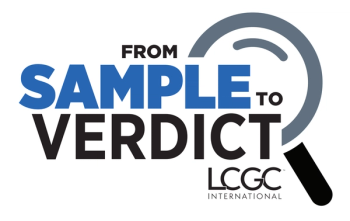
- Special Issues-12-01-2014
- Volume 32
- Issue 12
Use of Reversed Phase and HILIC in the 2D-LC Separation of Cationic, Anionic, and Hydrotropic Surfactants
Surfactants are frequently found in pharmaceutical and biopharmaceutical drug applications as well as in common household products. Because they can be polar, non-polar, or amphoteric, the structural diversity of the surfactants and complexity of the sample matrix can make their separation and identification by HPLC challenging. Historically, this has been achieved using reversed phase chromatography supplemented with ion exchange chromatography. When performed individually, these techniques can be used to characterize the surfactant profile. This application note illustrates the effectiveness of a reversed phase high throughput column, TSKgel® ODS-140HTP, in series with a TSKgel NH2-100 HILIC column, for the separation of polar and non-polar surfactants in a single injection using 2D-LC.
Results and Discussion
Figure 1 depicts the separation of four surfactants using the TSKgel ODS-140HTP and TSKgel NH2-100 columns in series. The use of a shallow, non-linear gradient of 40–60% CH3CN in 2.7 min, followed by an isocratic hold at 85% CH3CN till 5.4 min, allowed for high resolution of the sodium dodecylbenzene sulfonate impurities and good retention of sodium xylene sulfonate as well. This figure illustrates the utility of 2D-LC methodology for separating a diverse mixture of surfactants.
Due to the success in resolving the surfactant standards in a single run as explained above, the usefulness of this technique in detecting the corresponding UV-absorbing surfactant ingredients in an actual commercial household product was evaluated. Figure 2 illustrates the characterization of the surfactant profile of Armor All™ Wash and Wax using the 2D-LC methodology described above. As shown, the use of the TSKgel ODS-140HTP and TSKgel NH2-100 columns in series yielded excellent separation and retention of the anionic surfactant sodium dodecylbenzene sulfonate and the hydrotropic surfactant sodium xylene sulfonate present in the Armor All formulation. Additionally, the use of fluorescence detection (λex: 225 nm, λem: 300–400 nm) allowed for increased sensitivity of the low level surfactants found in the product.
Conclusions
The purpose of this study was to illustrate the effectiveness of 2D RP/HILIC for the separation of anionic, cationic, and hydrotropic surfactants. The use of the TSKgel ODS-140HTP column in series with the TSKgel NH2-100 column allows for the simultaneous retention and separation of both polar an non-polar hydrotropic, nonionic, and anionic surfactants in a single injection. The characterization of surfactants in a common household product is also successfully performed with the TSKgel ODS-140HTP and TSKgel NH2-100 columns, allowing for strong retention and good peak shape of various surfactants with no interference from other matrix compounds.
Tosoh Bioscience and TSKgel are registered trademarks of Tosoh Corporation.
Armor All is a registered trademark of The Armor All/STP Product Company.
TRITON is a trademark of The Dow Chemical Company.
Tosoh Bioscience LLC
3604 Horizon Drive, Suite 100, King of Prussia, PA 19406
tel. (484) 805-1219, fax (610) 272-3028
Website:
Articles in this issue
about 11 years ago
MicroSolv Technologyabout 11 years ago
Milestone, Inc.about 11 years ago
Pickering Laboratoriesabout 11 years ago
Shimadzu Scientificabout 11 years ago
Restek Corporationabout 11 years ago
Shodex/Showa Denko America, Inc.about 11 years ago
SiliCycle® Inc.about 11 years ago
AccuStandard, Inc.about 11 years ago
CHROMacademyabout 11 years ago
Avantor Performance Materials, Inc.Newsletter
Join the global community of analytical scientists who trust LCGC for insights on the latest techniques, trends, and expert solutions in chromatography.





